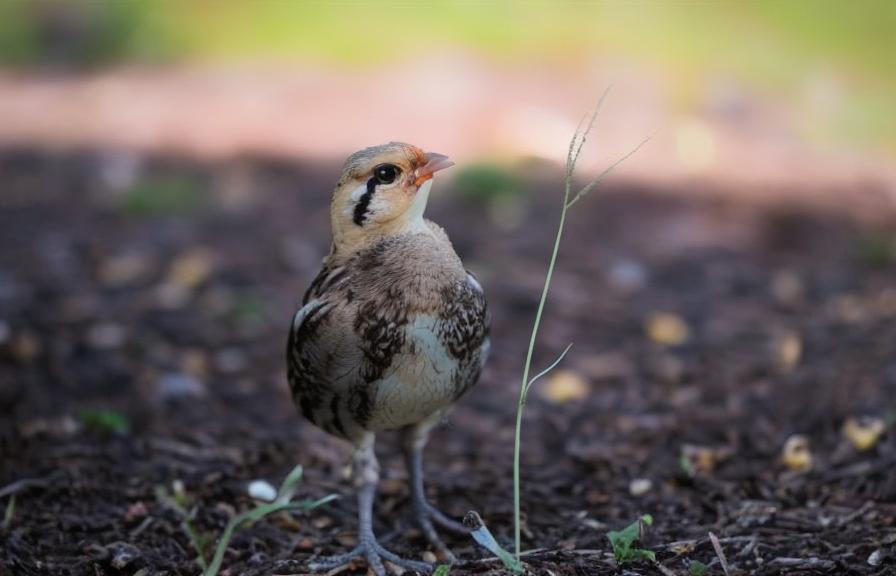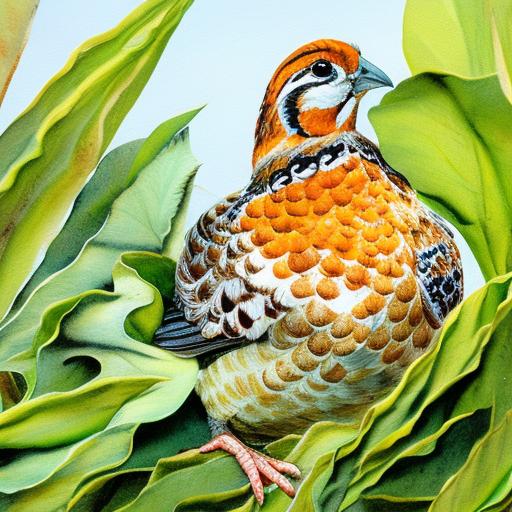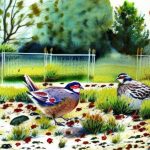Coturnix quail, also known as Japanese quail, are small game birds that are popular for their meat and eggs. They are native to East Asia and have been domesticated for thousands of years. Coturnix quail are known for their fast growth rate, high egg production, and adaptability to various environments. They are also relatively easy to care for, making them a popular choice for small-scale poultry farmers and homesteaders.
Coturnix quail are small birds, with a plump body and a short tail. They come in a variety of colors, including brown, white, and speckled. They are known for their gentle nature and can be easily handled, making them a great choice for those new to raising poultry. Coturnix quail are also known for their ability to lay eggs year-round, making them a valuable addition to any small farm or homestead. They are also relatively quiet birds, making them a good choice for those who live in urban or suburban areas.
Coturnix quail are omnivorous birds and will eat a variety of foods, including seeds, insects, and small plants. They can be fed a commercial quail feed, which is formulated to meet their nutritional needs. They also require access to clean water at all times. Coturnix quail are relatively low-maintenance birds and can thrive in a variety of environments, making them an ideal choice for those looking to raise poultry for meat and eggs.
Key Takeaways
- Coturnix quail are small, hardy birds that are easy to care for and can be raised for meat and eggs.
- When selecting breeding stock, look for birds that are healthy, active, and have good body conformation.
- The breeding environment should be clean, well-ventilated, and provide enough space for the quail to move around.
- Breeding and incubation require careful monitoring of temperature, humidity, and turning of the eggs.
- Caring for chicks involves providing a warm, draft-free environment, proper nutrition, and access to clean water.
- Managing breeding risks includes preventing inbreeding, monitoring for diseases, and providing proper nutrition.
- Breeding for desired traits involves selecting breeding stock based on specific characteristics such as egg production, meat quality, or coloration.
Selecting Breeding Stock
When selecting breeding stock for your Coturnix quail flock, it is important to choose birds that are healthy, productive, and have desirable traits. Look for birds that are active, alert, and have bright eyes. Avoid birds that appear lethargic or have any signs of illness. It is also important to select birds that are of good size and weight, as this can impact their ability to breed and produce eggs.
In addition to physical health, it is important to select breeding stock that comes from a reputable source and has a good genetic background. Look for birds that come from a line of productive egg layers and fast-growing meat birds. It is also important to consider the temperament of the birds, as gentle and docile birds are easier to handle and manage.
When selecting breeding stock, it is also important to consider the genetic diversity of the birds. Avoid breeding closely related birds, as this can lead to genetic abnormalities and health issues in the offspring. Instead, aim to introduce new bloodlines into your flock periodically to maintain genetic diversity and vigor.
Breeding Environment and Housing
Creating the right breeding environment and housing for your Coturnix quail is essential for successful breeding and egg production. Quail are social birds and should be kept in groups of at least five to six birds. When setting up the breeding environment, it is important to provide enough space for the birds to move around comfortably. A good rule of thumb is to provide at least one square foot of space per bird.
The breeding environment should also include nesting boxes or areas where the hens can lay their eggs. These nesting areas should be dark and secluded to provide the hens with a sense of security. It is also important to provide a clean and dry substrate in the nesting boxes, such as straw or wood shavings, to encourage the hens to lay their eggs.
In addition to nesting areas, the breeding environment should also include roosting perches for the birds to rest on. These perches should be placed at different heights to allow the birds to establish a pecking order and reduce aggression within the flock.
The housing for Coturnix quail should be well-ventilated and provide protection from predators and the elements. It is important to provide a secure enclosure that is predator-proof, as quail are vulnerable to attacks from predators such as raccoons, foxes, and birds of prey. The housing should also provide protection from extreme temperatures and inclement weather.
Breeding and Incubation
Breeding Coturnix quail is relatively straightforward, as they are prolific breeders and will mate naturally in a group setting. It is important to maintain a good ratio of hens to roosters in the breeding group to prevent over-mating and aggression among the birds. A ratio of one rooster to every four to six hens is ideal for maintaining harmony within the flock.
Once the hens have been successfully mated, they will begin laying eggs in their nesting areas. It is important to collect the eggs daily to prevent them from being damaged or eaten by the birds. The eggs should be stored in a cool, dry place with a consistent temperature until they are ready for incubation.
When it comes to incubating Coturnix quail eggs, there are several options available. You can choose to use a commercial incubator specifically designed for quail eggs or use a broody hen to incubate the eggs naturally. If using an incubator, it is important to follow the manufacturer’s instructions for temperature and humidity settings to ensure successful hatching.
The incubation period for Coturnix quail eggs is approximately 17 days. During this time, it is important to monitor the temperature and humidity levels in the incubator regularly to ensure optimal conditions for embryo development. It is also important to handle the eggs with care during the incubation process to prevent damage to the developing embryos.
Caring for Chicks
Once the quail chicks have hatched, it is important to provide them with a warm and safe environment to thrive. The chicks should be moved to a brooder with a heat source, such as a heat lamp or heating pad, to maintain a temperature of around 95 degrees Fahrenheit for the first week of their lives. The temperature can then be gradually reduced by five degrees each week until they are fully feathered.
The brooder should also provide enough space for the chicks to move around comfortably and access to clean water and chick starter feed. It is important to monitor the chicks regularly for signs of illness or distress and provide any necessary care or treatment.
As the chicks grow, they will need access to a larger space with more room to move around. This can be provided by transitioning them to a larger brooder or an outdoor enclosure with protection from predators and the elements.
It is also important to provide enrichment for the chicks, such as perches and hiding spots, to encourage natural behaviors and reduce stress. Providing a varied diet with access to insects and greens can also help promote healthy growth and development in the chicks.
Managing Breeding Risks

Breeding Coturnix quail comes with its own set of risks and challenges that need to be managed effectively. One of the main risks associated with breeding quail is aggression within the flock, especially during mating season. It is important to monitor the behavior of the birds regularly and separate any aggressive individuals to prevent injury or stress within the flock.
Another risk associated with breeding quail is egg infertility or low hatch rates. This can be caused by various factors such as poor nutrition, age of the breeding stock, or environmental stress. It is important to provide a balanced diet for the breeding stock and ensure they have access to clean water at all times. Regular health checks and monitoring of egg production can also help identify any issues early on.
Predation is another risk that needs to be managed when breeding Coturnix quail. It is important to provide secure housing and enclosures that are predator-proof, as well as regularly inspecting the perimeter for any signs of weakness or vulnerability.
Breeding for Desired Traits
When breeding Coturnix quail, it is possible to select for specific traits that are desirable for meat or egg production. For example, if you are breeding quail for meat production, you may want to select breeding stock that has a fast growth rate and good feed conversion ratio. If you are breeding quail for egg production, you may want to select breeding stock that has high egg production and good egg quality.
It is important to keep detailed records of your breeding stock and their offspring to track traits such as growth rate, egg production, and temperament. This information can help you make informed decisions when selecting breeding stock for future generations.
Selective breeding can also be used to improve specific traits within a quail flock over time. By selecting breeding stock with desirable traits and culling individuals with undesirable traits, you can gradually improve the overall quality of your quail flock.
It is important to have clear breeding goals in mind when selecting breeding stock and making breeding decisions. Whether you are breeding for meat production, egg production, or specific color patterns, having a clear vision for your breeding program can help you achieve your desired outcomes over time.
In conclusion, breeding Coturnix quail can be a rewarding endeavor for those looking to raise poultry for meat and eggs. By understanding the unique characteristics of these birds, selecting quality breeding stock, providing a suitable breeding environment, managing breeding risks effectively, and selectively breeding for desired traits, you can create a thriving quail flock that meets your specific goals and needs. With proper care and management, Coturnix quail can provide a valuable source of meat and eggs for your small farm or homestead.
If you’re interested in coturnix quail breeding, you might also want to check out Poultry Wizard’s article on “How Many Chickens Do You Need for a Family of 4?” This informative piece provides valuable insights into the ideal number of chickens for a family of four, offering practical advice on managing a small-scale poultry operation. It’s a great resource for anyone looking to expand their knowledge of backyard poultry farming. (source)
FAQs
What is coturnix quail breeding?
Coturnix quail breeding refers to the process of raising and breeding coturnix quail for the purpose of producing offspring for meat or egg production.
What are the basic requirements for coturnix quail breeding?
Basic requirements for coturnix quail breeding include suitable housing, proper nutrition, clean water, and a breeding program that ensures genetic diversity and health.
How long does it take for coturnix quail to reach breeding age?
Coturnix quail typically reach breeding age at around 6-8 weeks old, at which point they are capable of laying eggs or fertilizing them.
What are some common breeding challenges with coturnix quail?
Common breeding challenges with coturnix quail include maintaining proper environmental conditions, preventing aggression among males, and ensuring successful incubation of eggs.
What are some tips for successful coturnix quail breeding?
Tips for successful coturnix quail breeding include providing a balanced diet, monitoring for signs of illness or stress, and implementing a breeding program that promotes genetic diversity and strong offspring.
Meet Walter, the feathered-friend fanatic of Florida! Nestled in the sunshine state, Walter struts through life with his feathered companions, clucking his way to happiness. With a coop that’s fancier than a five-star hotel, he’s the Don Juan of the chicken world. When he’s not teaching his hens to do the cha-cha, you’ll find him in a heated debate with his prized rooster, Sir Clucks-a-Lot. Walter’s poultry passion is no yolk; he’s the sunny-side-up guy you never knew you needed in your flock of friends!







